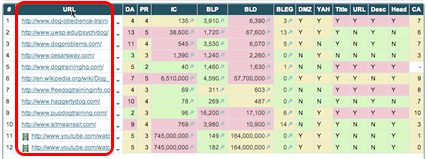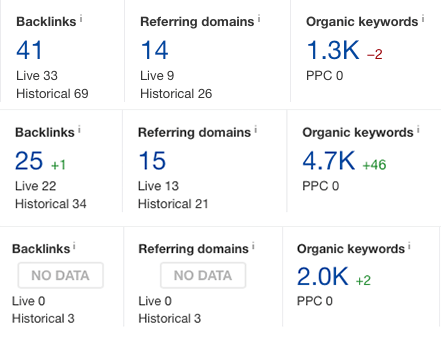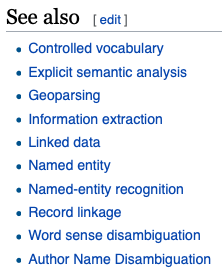- Joined
- Sep 3, 2014
- Messages
- 6,318
- Likes
- 13,295
- Degree
- 9

Today we are going to cover the entirety of on-page SEO. This is possibly the most important lesson in this entire guide. Do this right and you'll save hundreds of thousands of dollars in time, energy, and costs related to link and social signal acquisition.
Introduction
What They Say
When you're out and about on all of the blogs and forums, you'll hear a lot of conflicting advice about on-page factors...
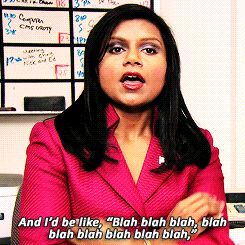
The second worst advice is from old blogs or old I.M.'s who haven't kept up with the playing field. They'll tell you to take every possible old school factor and include them three times each. The more the merrier! The problem with that is our friend called Panda and his ability to find over-optimized content.
Here's what you should remember... On-Page SEO is all about walking the razor's edge. If done right, you've already conquered over half of the battle of ranking for a specific set of terms. If under/over-optimized, you're not even in the races.
What We Say
...

These factors are the core of on-page SEO and exactly what's targeted as being over-optimized because any brainless monkey can do it. It's what will help you rank for the specific keyword you've chosen. The new stuff is what's going to support that ranking and bring in long-tail traffic that adds up to be more than the specific keyword you're going after.
These newer factors won't over-optimize you because they aren't based around a keyword. They are based around general factors that send "quality" signals to the search spiders. They are also your competitive edge. They can't be faked. There's no tricks or shortcuts. They take time and they take mental energy to compose properly.
So here's how we'll fast-track you on the topic of on-page SEO:
- Explain the old factors and how to use them in the present without over-doing it.
- Introduce the new factors and describe their use and purpose.

Let me state right off the bat... these are old but still very relevant. The key is to not go overboard. Which is to say, "No. You do not need to include all of these, and definitely not more than once."
This entire topic assumes you understand HTML, considering you're working online and that's the backbone to everything that's displayed in your browser. You have to be able to "mark up" your content with HTML tags in order to send these on-page signals. It only requires a rudimentary understanding of HTML, but if you think you're going to become a top dog in this game without knowing it like the back of your hand, you're wrong. Make sure you know what's what here!
The Good
This list is in order of importance and strength:
- The Title Tag - <title>
- Header Tags - <h1>, <h2>, <h3>, etc.
- Keyword in URL
- Image Alt Tags - <img alt="" />
- Strong and Emphasis Tags - <b> or <strong> and <i> or <em>
- The Meta Description - <meta name="description" content="">
That makes your life easy! Believe it or not, only three of the old on-page SEO factors even matter these days. But they matter a lot. We'll explain how to use them here in a moment.
The Bad
Here are two that are absolutely, without a doubt, no longer relevant that you can ignore entirely:
- Keyword Density
- The Meta Keywords Tag - <meta name="keywords" content="">
The Meta Keywords tag was from a time when search engines needed us to explicitly tell them which keywords we thought were important for our content because they couldn't sort it out. Now they can, and they know that you know this but still get greedy and out yourself as an SEO. It's basically like announcing to Google, "Hey guys, here's exactly what you shouldn't allow me to rank for."
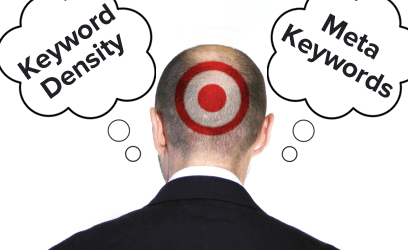
How to Use the Old Factors
We've talked about keyword research. You understand that while you have a core short-tail keyword you're going for, that you have a handful of long-tail keywords that you'll take in the meantime that will support your ability to conquer the main keyword.
Important: If you use your main keyword in every single possible spot in the old factors, you're on your way to a sad fizzling death. On-page over-optimization ties in closely with off-page over-optimization. The more you do here, the less you can do there, and vice versa. So don't get greedy!
Let's look at each of the five remaining old factors that are worth your while and build some examples along the way.
Let's say you're optimizing for three terms (in order of importance), using the classic example of the widget:
- Best Widgets (30,000 searches, buyer's intent!)
- Blue Widgets (10,000 searches, informational intent)
- Blue Widgets Reviews (3,000 searches, buyer's intent)
Title Tag
Your main goal here is to include your short-tail keyword in your title tag. Some people claim that you get a boost if it's at the front of the tag. We say that you can't possibly write a good title if you're doing that all of the time. User interaction (click through ratings on the SERPs) matter as well, so don't sabotage yourself by being greedy in any one place.

The Best Widgets are Blue - The Top 5 Reviewed!
What we've done is ensure "Best Widgets" (our money maker) appears intact. Make sure this happens. We've mentioned the word "Blue" and also "Reviewed" as a variation of the word Reviews. All three of your terms are in the most important slot in some fashion without you mentioning the word "Widgets" more than once.
Sure, you're two supporting keywords aren't explicitly mentioned here. We'll take care of that elsewhere, which will help dilute your use of the main term while helping the search engines understand the context of the article. They aren't dumb and will totally understand what you should rank for. They are hoping you're dumb enough to cram it down their throat so they can penalize you. Follow this method and you're safe.
Header Tags
Generally we will make our H1 tag the same as our title tag. This is for the user. When you display the title tag to them in the SERPs, you create continuity when they land on your page and expect to see that same title displayed somewhere. However, if you want to get tricky, you can write a different version of the title in order to use different keywords. We don't recommend it, but we don't see it as bad. The user always comes first.
At this point in the game, because most of us use the Title inside the H1 tag, the H2 may be the most powerful header tag you have at your disposal.

After your title and your introduction, your H2 tag might look something like...
What to Look for in Blue Widgets Reviews
Before you embark on the journey of sharing the top reviewed products, you can explain the structure of the reviews, which will allow you to expand your content and include LSI terms.
At this point, in our H3 tag, we could keep it simple and say: The Top 5 Reviewed Widgets. And then you could use H4's for the name of each widget product. This will dilute your usage of your specific key phrases and keywords within your header tags, while keeping them in the most important tags. Safe. And it digs you down to H4, which most articles online don't do. This means you have more depth and information, as far as a computer might be concerned.
Keyword in URL
When possible, include your keyword or keyphrase in your URL structure somehow. There are lots of ways to accomplish this based on the CMS you're using. If you're building a flat file site then you can set up whatever you want. Get it in there!
Image Alt Tags
When you place a picture in your article, you have to use the image tag. That's what's happening even if your visual editor is doing it for you. Some people are blind and use a text-to-speech converter. Sometimes the image fails to load. In both circumstances, the "alternate" option is to show or read the contents of the alt tag.
The purpose of this is to describe the picture in some sense. It's not exactly a caption, but a short phrase that gives the context of what is in the image. So perhaps you show the Acme Model 3 Blue Widget in an image. That'd be the perfect alt tag, considering it uses two of our words that help make up our main keywords. Remember, you don't have to fall prey to slamming in the exact keyword phrase you're hoping to rank for. Provide context and be natural:
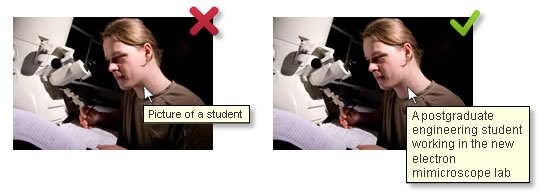
Strong and Emphasis Tags
Don't be the person who straight up just bolds blue widget reviews for no reason other than to do it. You're begging Google to notice your tricks and doing it in the places that offer the least reward. Don't even bother with bolding and italics unless it's natural. Then creatively sneak in your phrase. Never bold or italicize your phrase only, but include it within the emphasized portion. For instance...
Remember as you read these reviews... another person's opinion about a specific set of blue widgets is just that, their opinion. Your mileage may vary. Make sure to consider which qualities are the most important to you before you make your decision.
If you're going to use these tags, just keep it natural. Technically, while they offer little power, they could be the tie-breaker between you and your competitor. But that's never really going to happen due to the hundreds of other ranking signals on and off-page. It's one of those easy wins that could come back to bite you if you don't keep it natural.
Meta Description
At this point, the meta description is only a suggestion to Google about what they should display in the SERPs under your title. They have a lot of data and more often than not will pluck portions out of your content to display. They do this in order to show the keyword or phrase that the user has searched. So that lets you know that having your keyword in your description matters, if not as a ranking signal than only as a means to increase your click through rating, which is a positive ranking signal. So do it if you have time.

So think of it like Clickbait. Don't give away the full story. Make them want the rest. They'll know the only way to get it is to click.
Take a Breather...
With just the above information, you'll spank most of your nonsense competitors. I'd venture to say that this would take you 30% of the way alone, without any links or other on-page factors. But thankfully there's still plenty of advanced on-page optimization we can do that is guaranteed to boost our rankings and present no danger of being squashed by the Panda.

The New Factors
The old factors are entirely about optimizing around a set of key phrases. The new factors are about optimizing around the concepts of quality, authority, and trust. Yes, they are abstract. Yes, nobody can measure them and most struggle to define them. That's because the game is now being played on the next level and the average advice-slinger isn't there yet.
The old factors can be considered global in the sense that they apply in every niche for every page. They can be considered hierarchical in the sense that all you have to do is beat the person directly below you and attempt to beat the person above you. It was a game of leap-frog.
The new factors are where trust, authority, and quality come in, and the reason everyone struggles to understand them is that they are still thinking about leap-frog. They are thinking in terms of variables in isolation on one SERP. That's simply incorrect these days.
These abstract variables are not global, but local. They refer not only to your specific page and those other 9 on page one of that specific SERP, but with your entire domain being measured against those of your niche competitors. The way to reduce spammer effectiveness was to stop measuring individual pages so heavily and to begin to weigh factors that can't be easily manipulated.
Think of things such as the age of the domain, the number of indexed pages, emphasis on these same factors on the domain where your backlink is coming from, topical relation of the page a link is coming from, etc. These are much harder to fake, but still possible.
But the one set of factors that are impossible to fake are what we are about to discuss. You can easily take advantage of them if you're willing to put in the time and energy up front. Yes, it requires attention to detail and all of the other draining mental activities. But they also make your overall job 100% easier in the long-run. You plan on being around for the long-run, right?

- Your Grade Level Reading Score
- Latent Semantic Analysis/Indexing (LSA/LSI)
- Term frequency - Inverse document frequency (tf*IDF)
- Supplementary Content (sidebar, footer, header)
- Page Speed Time
- Length of Content
- Enhanced Content Types
Grade Level Reading Score
There are several algorithms being used for this, all offering similar results. The Flesch Kincaide Reading Ease score might assign you a number value between one and ten, while the Grade Level scores will assign you a value between Kindergarten and Post-Doctorage complexity.

If you're writing about coloring books, there's zero reason it should measure at the Master's Degree level. And your discussion on the nature of consciousness and it's role in the human condition shouldn't be 3rd grade level either.
This is all fairly obvious once it's pointed out. The number of errors in your content will also affect this score and your quality, trust, and authority as well. Find out what Google prefers for your vertical and go with it. This is going to be based on what the readership prefers, so it's a win-win for you.
Latent Semantic Analysis
This is why you don't need to do keyword stuffing or worry about keyword density any more. We started with dictionaries, and then created a relationship between dictionary words with thesauruses. The next step has emerged, which goes beyond the word or even sentence level. It deals with overall pieces of content.
The smart machine will have noticed after analyzing its incredibly large index, "I notice that 30% of the time that when people talk about Widgets that they end up mentioning Gadgets too. There's a relationship there. But it's not as strong as the relationship to the concept of Thingamabobs, which is gets mentioned 80% of the time Widgets are mentioned."

Term frequency - Inverse document frequency
This was the keyword stuffing killer. This is what stopped all of the idiots who were still writing for robots dead in their tracks. This is also what you want to watch out for when you hire SEO writers, because they think that means "mention the keyword as many times as possible."

That's why the word "Inverse" appears in tf*IDF. The amount of times a word is used is inversely proportional to its importance to the document. So basically, if you use your keyword too many times, or any word appearing within your key phrase, you're crossing a threshold where you begin to insist that it's less important.
The reason is is that in reality in the way we actually write and speak, once we state a noun or a name of a product, we stop referring to it as the noun or name and we start using words like "it, he, she, her, that." It's mathematically sound, and which is why we use LSA terms to fill in the gaps and we save our actual key terms for the important old factors.
Supplementary Content
Google has hired humans for millions of man-hours to rate supplementary content. They are feeding this data to their machines so that the machine learns to mimic the human's perception. So all that stuff you cram in your footer and sidebar needs to be useful to some degree.
Good ideas include stating your physical address, a phone number, links to your contact and about pages, displaying the most popular or related posts to the one being read, links to other related websites, an email list sign-up box, etc. Think about the things a human would deem useful and that's what the machine thinks too.
Bad ideas would include all advertising space, sitewide links to other websites, randomized content or links, any crawlable words unrelated to the topic at hand, etc.
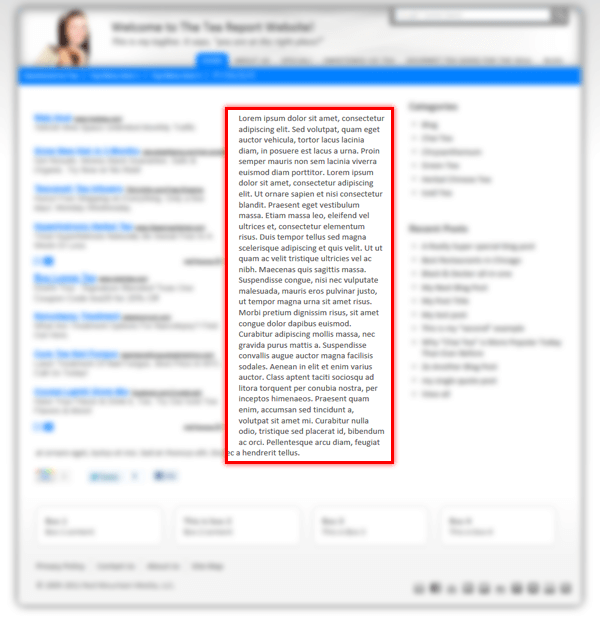
Page Speed Time
While we do have an entire day dedicated to page speed, don't jump ahead. Just understand the concept. The slower your webpage loads, the less useful it is to humans. They will abandon it, press back before it finishes loading, and all other ridiculous instant-gratification behavior. That's just how it is and search engines know this. So they measure how long it takes your page to load. The faster, the better.
We've personally made a page load faster and seen a rise in the main keyword's ranking and seen an increase of long-tail traffic. The same goes for making your entire domain load faster. It's a very good thing and shouldn't be taken lightly.
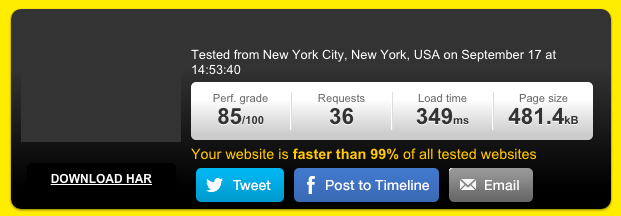
Length of Content
Sure, this is easy to fake. However, for it to be unique and not full of errors plus including the other new factors listed above and below is impossible to fake. There is a direct correlation (notice I said correlation, not causation) between the length of your content and how high it ranks. There was a time when 300 words cut it. 100 words can still cut it depending on the terms. But if you really want to take down an important term, 2,500 words is what you should be aiming for. My last post for a huge term was over 13,000 words. Guess how it's performing?
The reason this correlates highly with ranking is two-fold. User's tend to link to and share longer content loaded down with pictures and the advanced content types we are about to discuss. The second reason is the reason why they link and share it. They believe it's more authoritative and of a higher quality. They trust it more. The search engines know this so they go ahead and give you a boost for it. Then the user's interact with it better and you get a second boost. Then they link to it and share it and you get a third boost. Get those boosts.
Enhanced Content Types
Here's the real winner, saved for last. If you include these enhanced types of content, you won't struggle to reach 2,500 or even 10,000 words.
Let's just talk about these conversationally. If I miss any, or your niche uses some that I don't mention, you'll be able to spot them immediately when you see them in the wild. Add them to your list!
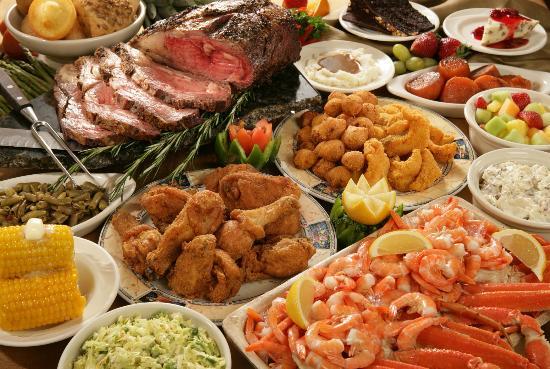
The obvious "extras" you should be tossing in are lists, whether ordered or unordered. Videos are a great way to boost your time on-site per user. Images aren't even a question, but you can take it to the next level with an infographic within the article. The goal with all of this is to keep the user engaged and scrolling till they hit your call-to-action and do whatever you want them to, because they are having so much fun and learning so much.
Another one that ensnares so many people are quizzes. They just have to answer those questions and see where they measure against others or find out what type of Harry Potter character they are.
Is your article really long with lots of sub-sections like this one you're reading now? Consider adding a wikipedia style table of contents at the top, where a list of all of the headers are clickable and jump the user directly to that section. Google understands these and even includes them in the SERPs. Don't forget your "Back to the Top" links!
Consider adding a Resources section that lists other related articles on your own website and on others together in one spot so your page acts as an information hub.
With the advent of hero images, this is mattering less and less, but watch what is above the fold on your site. The fold is obviously of different sizes these days and with mobile and tablets its just absurd. At least attempt to make sure content appears above any advertisements. This is a ranking factor.
And domain wide, does your site feature contact information and pages? Does it feature an About page that is substantial and includes data that Google might scrape and consider you an actual entity? Do you link out to your social network pages (with the appropriate schema mark-up, which we talk about in a future day in this guide)?
To reiterate, you should include enhanced content types that keeps your user engaged, entertained, and on your site for longer:
- Lists
- Videos
- Images & Infographics
- Quizzes
- Table of Contents
- Resource Sections
- Above the Fold Considerations
- Domain-Wide Entity and Trust Factors
Conclusion for the Day...
I posted this here on BuSo the other day...

Let's let all this sink in for a minute. Don't worry about memorizing all of this info. It's here for you any time. Remember, this is the rudimentary and advanced on-page stuff you should be doing without question. We also mentioned Schema Markup and Page Speed Optimization that you can explore later. These will help bring your entire domain's on-page factors together and boost each of your individual pages along the way.

